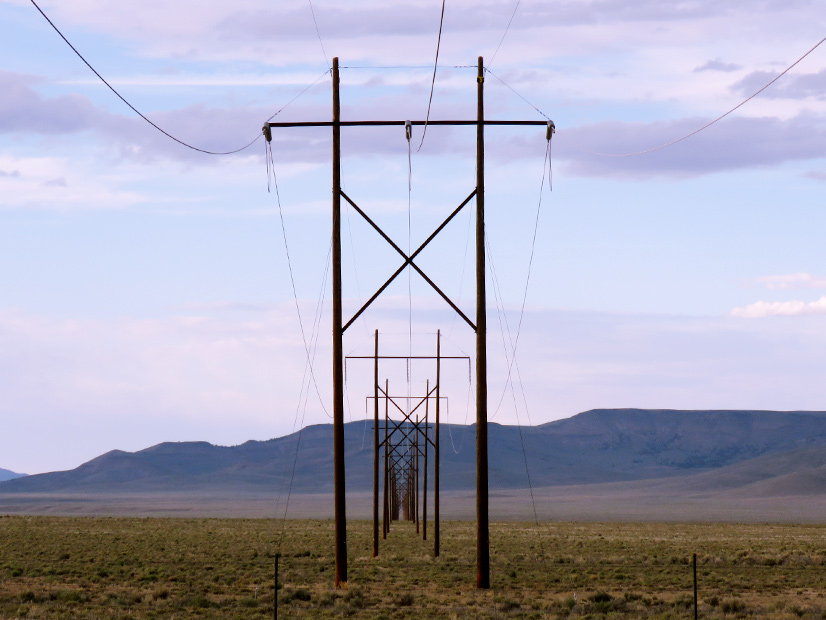In a report on last summer’s energy emergencies, the Public Utilities Commission of Nevada (PUCN) said the state was too reliant on imports and CAISO and called for an organized market in the West.
“The West as a region and Nevada as a state need a larger, regional market that integrates multiple utilities, allowing renewable generating resources to balance across large geographic areas,” said the report, released June 15. “A predictable, reliable Western transmission system is critical to ensuring electric reliability in the region.”
The report on Nevada’s supply problems was yet another signal that Western entities may need to form or join one or more RTOs this decade.
Nevada and Colorado lawmakers passed bills in the past month requiring transmission owners to join an RTO by 2030. (See Xcel Delays Joining EIM to Examine Options.) Nevada Gov. Steve Sisolak, who signed his state’s measure, plans to convene a Regional Transmission Coordination Task Force to provide advice on joining an RTO. (See related story, Many Next Steps to Follow Passage of Nevada Energy Bill.)
The PUCN’s report appeared to lend support to the effort. It detailed the results of an investigation begun last August, days after Nevada experienced energy emergencies during a severe Western heat wave.
In neighboring California, CAISO called for load shedding Aug. 14-15, prompting rotating outages. (See CAISO Issues Final Report on August Blackouts.)
Nevada’s crisis arrived three days later, on Aug. 18, when NV Energy and other load-serving entities faced emergencies because of “insufficient generation and transmission capacity to meet peak demand,” the PUCN wrote.
NV Energy’s reliability coordinator, CAISO-led RC West, declared a level 3 emergency on the afternoon of Aug. 18 as Las Vegas hit a record-high temperature of 114 degrees Fahrenheit. The utility bought energy to compensate, but much of it was not delivered, the report said.
“For a 10-hour period on Aug. 18, 2020, NV Energy procured 19,760 MWh of energy through bilateral contracts with third-party entities,” the PUCN said. “However, during this period, only approximately 13,639 MWh of energy were delivered to NV Energy.
“For the [6 p.m.] hour … NV Energy’s most critical period … [the utility] procured over 2,000 MWh of wholesale market energy through bilateral agreements to be delivered but only received approximately 864 MWh of energy, resulting in 1,243 MWh (59%) of undelivered energy,” it said.
NV Energy avoided rolling blackouts that day only because of conservation efforts and by accessing operating reserves through an agreement with the Northwest Power Pool, the report said.
Investigation and Findings
The PUCN opened its investigation of the events Aug. 26, resulting in last week’s report. It identified issues that contributed to the emergencies, including the state’s over-reliance on increasingly constrained imports.
“Over the prior five years, Nevada’s resource planning process has focused on cost-saving opportunities for ratepayers by finding prudent NV Energy’s actions to fulfill an increasing amount of its supply needs in the Western market,” it said. “At the same time, a number of areas of [WECC] faced growing resource constraint. As retirements of large generating stations continue and are replaced by generating resources with dissimilar generating characteristics, some regions in the WECC are growing more dependent on seasonal or intraday imports.”
In March, WECC’s assessment of Western resource adequacy found Nevada was among the regions in which imports are essential to ensure reliability during summer peaks. The PUCN took note of that and called for planning upgrades. (See RA at Risk in NWPP-Central, WECC Finds.)
“Today, Nevada often exports solar generation and relies on imports from neighboring states like California, Arizona and Oregon to meet peak demand, particularly during the evening when solar generation is unavailable,” the report said. Resource planning “must become more granular and move beyond the borders of Nevada and lengthen its focus to assess regional market risks.”
CAISO in Crosshairs
The report also critiqued Nevada’s dependence on CAISO, a possible contender to lead a Western RTO.
“CAISO is not a Western regional planning entity; it was structured to meet California’s electricity needs,” it said. “However, because the CAISO is the only liquid market in the West, all trades between balancing authorities or utilities are either bilateral transactions or traded volumes in the CAISO markets.”
Under the system, Nevada utilities contract for “firm” imports, but a “downstream buyer has no way of distinguishing between a … contract backed by a portfolio of physical generation owned by the seller and a ‘firm’ contract backed by day-ahead purchases in the CAISO markets.”
As in August, the result can be imports that do not materialize, the report said.
NV Energy proposed a short-term fix in procurement changes that “recognize the risk of Nevada’s reliance on market resources that are sourced from or wheeled through the CAISO and, therefore, propose procurement of energy at higher targets for reliability purposes,” the report said.
It noted that “NV Energy has issued requests for proposals for non-CAISO-sourced energy, but because the CAISO is the largest and only liquid market in the western United States, NV Energy currently relies on the CAISO wholesale energy market for a portion of its resource adequacy to provide reliable electric service to Nevadans.”



